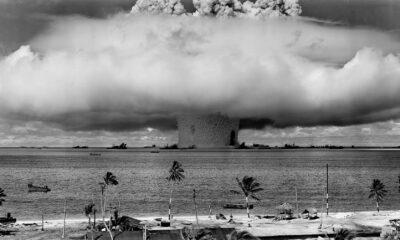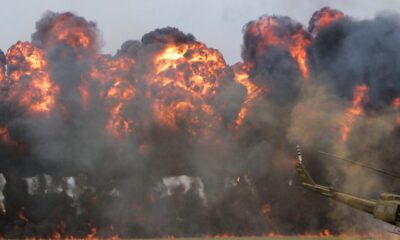Air bombardment, warship bombardment, and underwater caused massive killings and destruction in Japan after WWII. The towns of Hiroshima and Nagasaki, except for both ancient capitals, Kyoto and Nera, were devastated by nuclear weapons. Around 119 other cities were bombed, resulting in the loss of 2.2 million homes and 9 million homeless.
War destroyed approximately 40% of the national civil wealth. There was significant damage to warehouses, highways, bridges, power poles, waterworks, school buildings, hospitals, and communications networks. Mining, production, and transport incurred substantial losses. For several years, war defeated Japan’s living conditions about 30% of the pre-war (1935-37) peak (Hayashi, 1990).
Growth of Economy
Japan is the purest representation of what has been recognized as an agricultural producer economy, and many of its economic activities are also well recognized. For almost 40 years, the nation has subordinated other priorities to the US economy – and even transcends it.
The revisionist critics rightly stressed the role of the Government of Japan in achieving that target. Still, they disregarded the two other foundations of Japanese success: big industries and a well-educated workforce. These three foundations cooperated with the growth plan that was unusually oriented and generated remarkable economic efficiencies.
During the Second World War, Japan had allies, but it was expensive when Japan was lost in the war. World War II ravaged the Japanese economy and Japan as a country. Kosaka (1972) claims that the bombs killed and disables 8,000,000 Japanese at the close of the war at the loss of nearly half of the nation’s richness. During this time, Japan lost its coal output and low rice harvesting, had little entry, and inflation rose rapidly, and, above all, the unemployment rate in Japan was healthy.
Japan’s Post-WWII Growth
Regardless of Japan’s great defeats, the war hadn’t wreaked down the basics of civilization required to industrialize. A national agreement on modernization (war-to-war ambition), societal reverence for literacy, acceptance of hard labour and frugality, new educational and management bureaucratic frameworks.
The citizens were orderly. In a beneficial foreign climate and at low military costs, Japan will only be able to commit all its resources to the same target, the country’s restoration a few years after the surrender.
In this historical sense, the history of Japan’s economy 70 years after the Second World War can be viewed as a continuation of the national catch-up, which started at the end of the 19th century. The economic dynamism of the pre-war and postwar period has constant characteristics. Yet there are variations as well.
The Roots of Japan’s Success
The “backwardness” of the Japanese economy compared with mature developed economies of the world was the core development factor common to pre-war and post-war economies. Since it originated from behind, it was able to profit from technologies borrowed from industrialized countries immensely. Technology here involves technological know-how specifically relevant to production and societal, economic, and organizations and structures.
In the immediate post-war years, while the Japanese economy was significantly undermined, financial specialist Joseph Dodge introduced an austerity policy in 1949 ended inflation. The Korean War (1950-53) was a significant asset for Japanese businesses. In 1949 Yoshida cabinet set up MITI to foster economic development through strong cooperation between government and big business, the Ministry of Foreign Trade, and Industry.
MITI successfully aimed to support and facilitate exports in the automotive and heavy industries. Japanese firms have consistently maintained committed and seasoned workers via the lifelong job scheme, which guarantees their workers’ healthy work.
By 1955, Japan’s economy was above pre-war averages and by 1968 became the world’s second-highest. The Japanese economy was depending heavily on agriculture, particularly rice production, until the mid-1950s.
Highly Labor-Intensive Farming Methods
Government established highly labor-intensive farming methods. In which villagers have worked hard in partnership to secure low-income harvests. In these farming activities, the Japanese’s beliefs, traditions, and uses are rooted: work hard and save surpluses for the next few years. The nation has often experienced several natural hazards, typhoons, hurricanes, volcanic diseases, severe rains, droughts, and early freeze that can spoil the crop.
People had to conserve rice to shield themselves from specific emergencies. Money replaced the rice later. Between 1979 and 1989, the saving ratio was 15-20 % higher in Japan than in other developed countries (e.g., 6-8% in the United States).
Following the conflict, the nation lost approximately 40% of the manufacturing facilities and assets. And development returned to levels some 15 years ago. During the occupation, many US-sponsored initiatives, including land reform, led to its potential success by intensifying competitiveness.
Factors of Growth
In the early post-war years, massive energy, gas, steel, and chemicals targeted the destroyed manufacturing potential. By the mid-1950s, pre-war production was matched.
Free from military government requests, the economy not only regained its lack of traction but achieved the development rates of previous decades. Seas industries recruited more than 41% of the population in 1965, while just 26% stayed in agriculture. Millions of retired troops joined Japan’s well-disciplined and highly trained labor force.
Japan’s esteemed post-war education system much led to the modernization process. Japan’s technologically sophisticated economy was primarily powered by the country’s highest rates of literacy and education levels.
The more outstanding position of Japan in the world has drastically shifted since the 1970s. Japan became a leading advanced manufacturing nation as its economy evolved. The macroeconomic reforms in the 1980s — slow development, technical success, and tighter labor markets, all helped turn Japan into a big borrower nation, inflating foreign investment in the country.
Although Japan has long been very concerned with the outside the world as a raw material source and a demand for the exports, it has forced Japan to become more active in world relations, extensive production facilities, financial institutions, and real estate in the overseas countries. Japan has also attempted to further manipulate the United Nations by providing a permanent Security Council position in the 1990s.


 Featured2 years ago
Featured2 years ago
 Featured3 years ago
Featured3 years ago
 Featured2 years ago
Featured2 years ago
 Featured4 years ago
Featured4 years ago
 Featured3 years ago
Featured3 years ago
 Featured5 years ago
Featured5 years ago
 Featured2 years ago
Featured2 years ago
 Featured3 years ago
Featured3 years ago





















